
How to Use N-MOSFET: Examples, Pinouts, and Specs
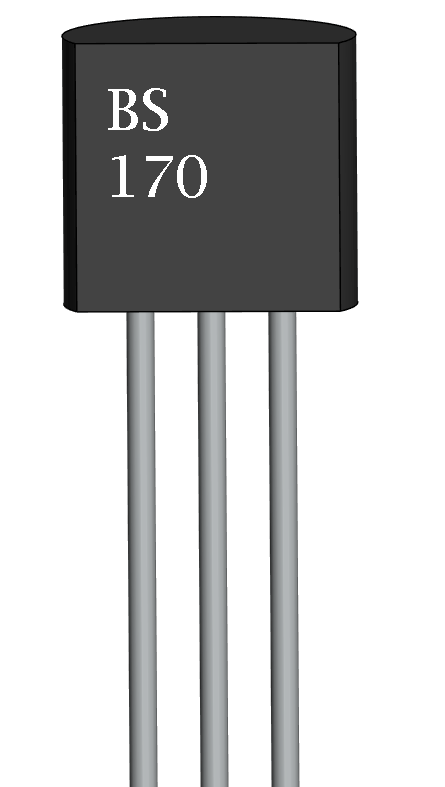
 Design with N-MOSFET in Cirkit Designer
Design with N-MOSFET in Cirkit DesignerIntroduction
An N-channel Metal-Oxide-Semiconductor Field-Effect Transistor (N-MOSFET) is a type of transistor that uses an n-type semiconductor for the channel. It is widely used in electronic circuits for switching and amplifying signals. The N-MOSFET operates by allowing current to flow from the drain to the source when a positive voltage is applied to the gate terminal, making it a key component in digital and analog circuits.
Explore Projects Built with N-MOSFET
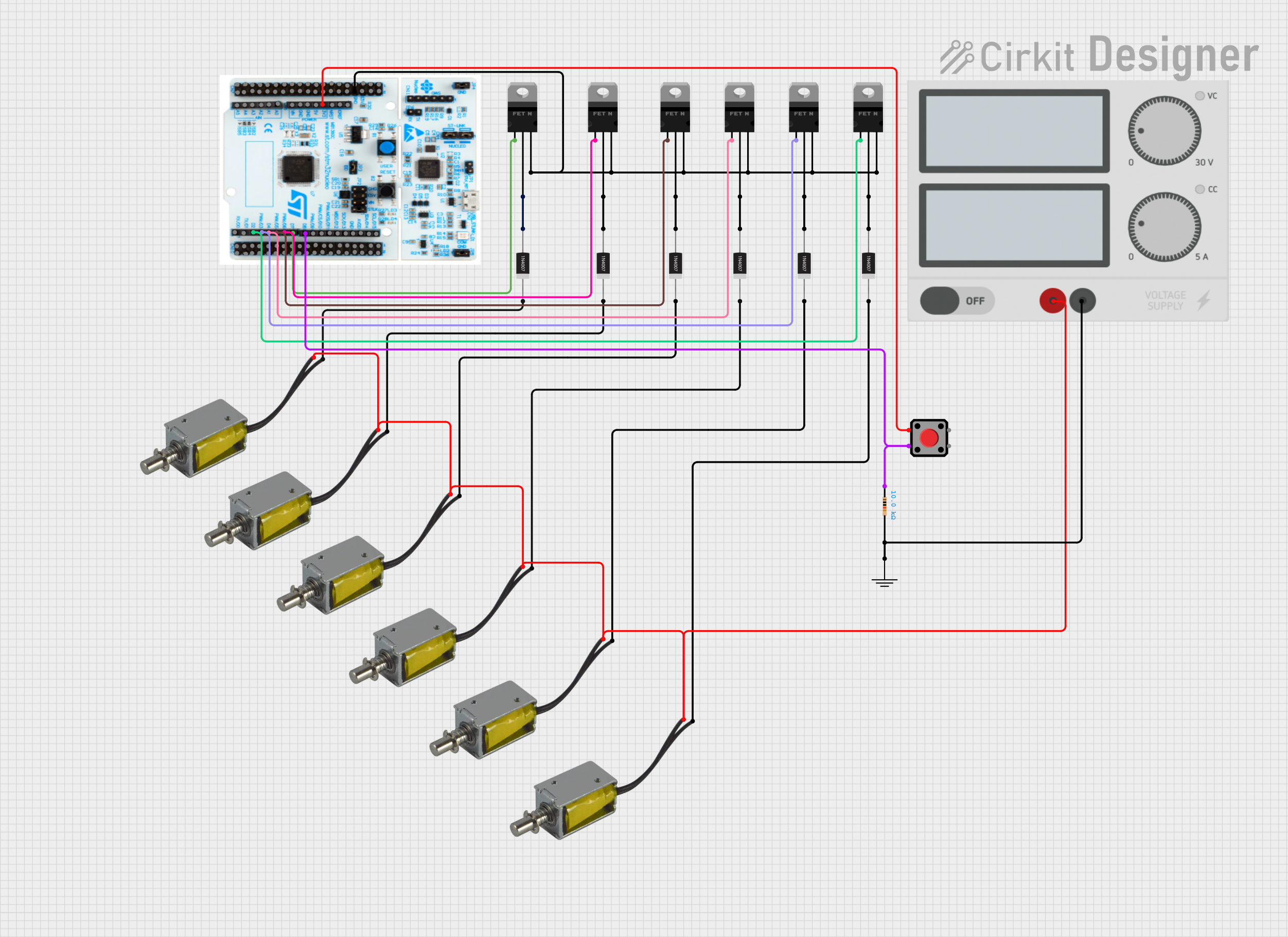
 Open Project in Cirkit Designer
Open Project in Cirkit Designer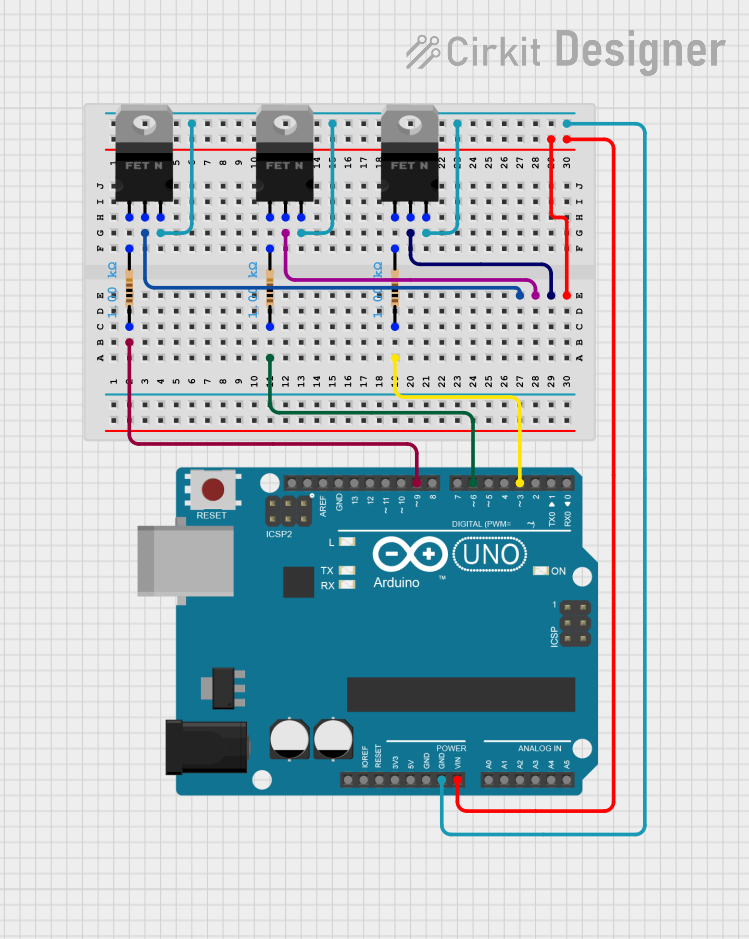
 Open Project in Cirkit Designer
Open Project in Cirkit Designer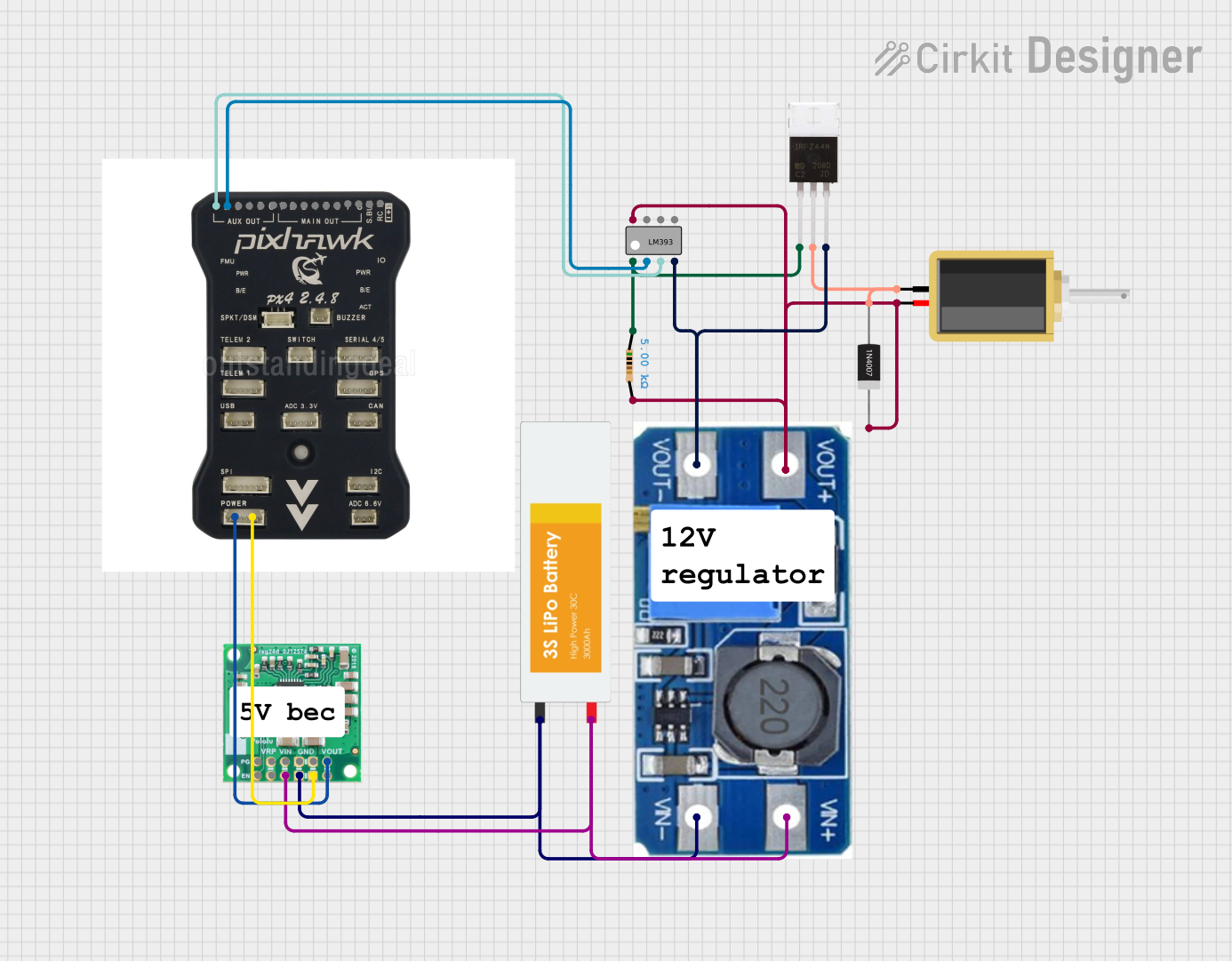
 Open Project in Cirkit Designer
Open Project in Cirkit Designer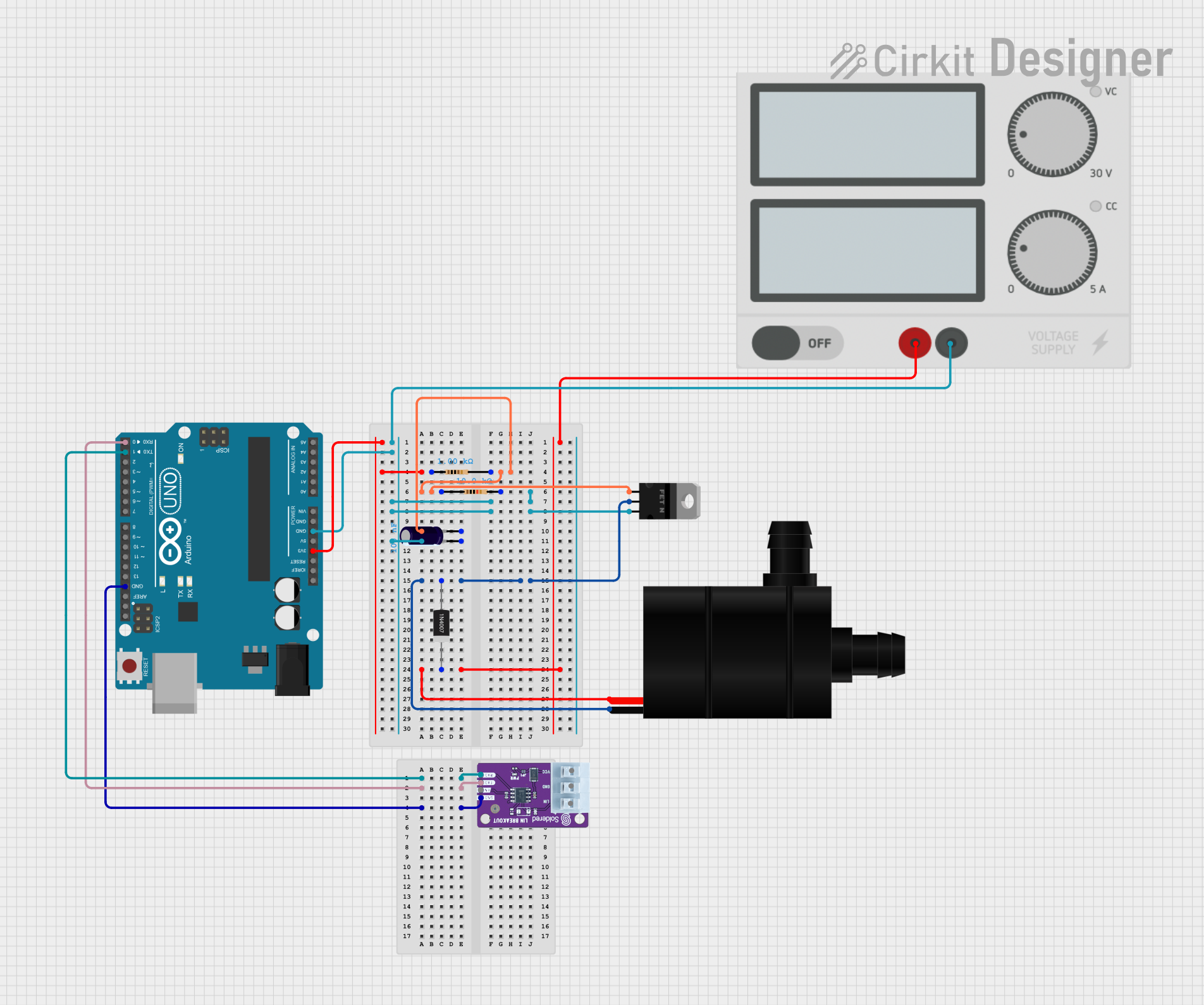
 Open Project in Cirkit Designer
Open Project in Cirkit DesignerExplore Projects Built with N-MOSFET

 Open Project in Cirkit Designer
Open Project in Cirkit Designer
 Open Project in Cirkit Designer
Open Project in Cirkit Designer
 Open Project in Cirkit Designer
Open Project in Cirkit Designer
 Open Project in Cirkit Designer
Open Project in Cirkit DesignerCommon Applications and Use Cases
- Power management circuits (e.g., DC-DC converters)
- Motor control and driver circuits
- Switching regulators
- Amplifiers in audio and RF systems
- Logic level shifters
- High-speed switching applications
Technical Specifications
Below are the general technical specifications for a typical N-MOSFET. Note that specific values may vary depending on the model and manufacturer.
| Parameter | Typical Value |
|---|---|
| Drain-Source Voltage (VDS) | 20V to 600V (varies by model) |
| Gate-Source Voltage (VGS) | ±20V |
| Continuous Drain Current (ID) | 1A to 100A (varies by model) |
| Power Dissipation (PD) | 1W to 300W (varies by model) |
| RDS(on) (On-State Resistance) | 1mΩ to 1Ω (varies by model) |
| Switching Speed | Fast (nanoseconds to microseconds) |
| Operating Temperature | -55°C to +150°C |
Pin Configuration and Descriptions
The N-MOSFET typically has three pins: Gate (G), Drain (D), and Source (S). Some models may include a fourth pin for the substrate or body (commonly tied to the source). Below is the pin configuration:
| Pin | Name | Description |
|---|---|---|
| 1 | Gate (G) | Controls the flow of current between the drain and source. A positive voltage |
| applied here turns the MOSFET on. | ||
| 2 | Drain (D) | The terminal through which current flows when the MOSFET is on. |
| 3 | Source (S) | The terminal through which current exits the MOSFET. |
Usage Instructions
How to Use the N-MOSFET in a Circuit
- Determine the Operating Voltage and Current: Ensure the N-MOSFET's voltage and current ratings meet the requirements of your circuit.
- Connect the Terminals:
- Connect the source to the ground or the negative terminal of the power supply.
- Connect the drain to the load (e.g., a motor or LED) and then to the positive terminal of the power supply.
- Apply a control signal to the gate to turn the MOSFET on or off.
- Gate Resistor: Use a resistor (typically 10Ω to 1kΩ) between the gate and the control signal to limit inrush current and protect the gate.
- Flyback Diode: For inductive loads (e.g., motors), add a flyback diode across the load to protect the MOSFET from voltage spikes.
Important Considerations and Best Practices
- Gate Drive Voltage: Ensure the gate voltage is sufficient to fully turn on the MOSFET (check the VGS(th) threshold in the datasheet).
- Heat Dissipation: Use a heatsink or proper cooling if the MOSFET dissipates significant power.
- Avoid Overvoltage: Do not exceed the maximum VDS or VGS ratings to prevent damage.
- Switching Speed: Use a gate driver circuit for high-speed switching applications to minimize switching losses.
Example: Controlling an LED with an Arduino UNO
Below is an example of using an N-MOSFET to control an LED with an Arduino UNO.
Circuit Diagram
- Source: Connected to ground.
- Drain: Connected to the negative terminal of the LED (positive terminal of the LED connected to a resistor and then to +5V).
- Gate: Connected to an Arduino digital pin (e.g., pin 9) through a 220Ω resistor.
Arduino Code
// Define the pin connected to the MOSFET gate
const int mosfetGatePin = 9;
void setup() {
pinMode(mosfetGatePin, OUTPUT); // Set the MOSFET gate pin as an output
}
void loop() {
digitalWrite(mosfetGatePin, HIGH); // Turn the MOSFET on (LED lights up)
delay(1000); // Wait for 1 second
digitalWrite(mosfetGatePin, LOW); // Turn the MOSFET off (LED turns off)
delay(1000); // Wait for 1 second
}
Troubleshooting and FAQs
Common Issues and Solutions
MOSFET Not Turning On:
- Cause: Insufficient gate voltage.
- Solution: Check the VGS(th) value in the datasheet and ensure the gate voltage exceeds this threshold.
Excessive Heat:
- Cause: High current or poor heat dissipation.
- Solution: Use a heatsink or a MOSFET with a lower RDS(on) value.
MOSFET Always On or Off:
- Cause: Gate signal not properly connected or damaged MOSFET.
- Solution: Verify the gate signal and replace the MOSFET if necessary.
Voltage Spikes Damaging the MOSFET:
- Cause: Inductive load without a flyback diode.
- Solution: Add a flyback diode across the load.
FAQs
Q: Can I use an N-MOSFET for high-side switching?
A: While N-MOSFETs are typically used for low-side switching, they can be used for high-side switching with a proper gate driver circuit to provide the required gate voltage.
Q: How do I choose the right N-MOSFET for my application?
A: Consider the voltage, current, RDS(on), and power dissipation ratings. Ensure they meet or exceed the requirements of your circuit.
Q: Do I need a gate resistor?
A: Yes, a gate resistor (e.g., 220Ω) helps limit inrush current and protects the gate from damage.
Q: Can I drive an N-MOSFET directly with an Arduino?
A: Yes, if the MOSFET is a logic-level type with a low VGS(th). Otherwise, use a gate driver circuit.